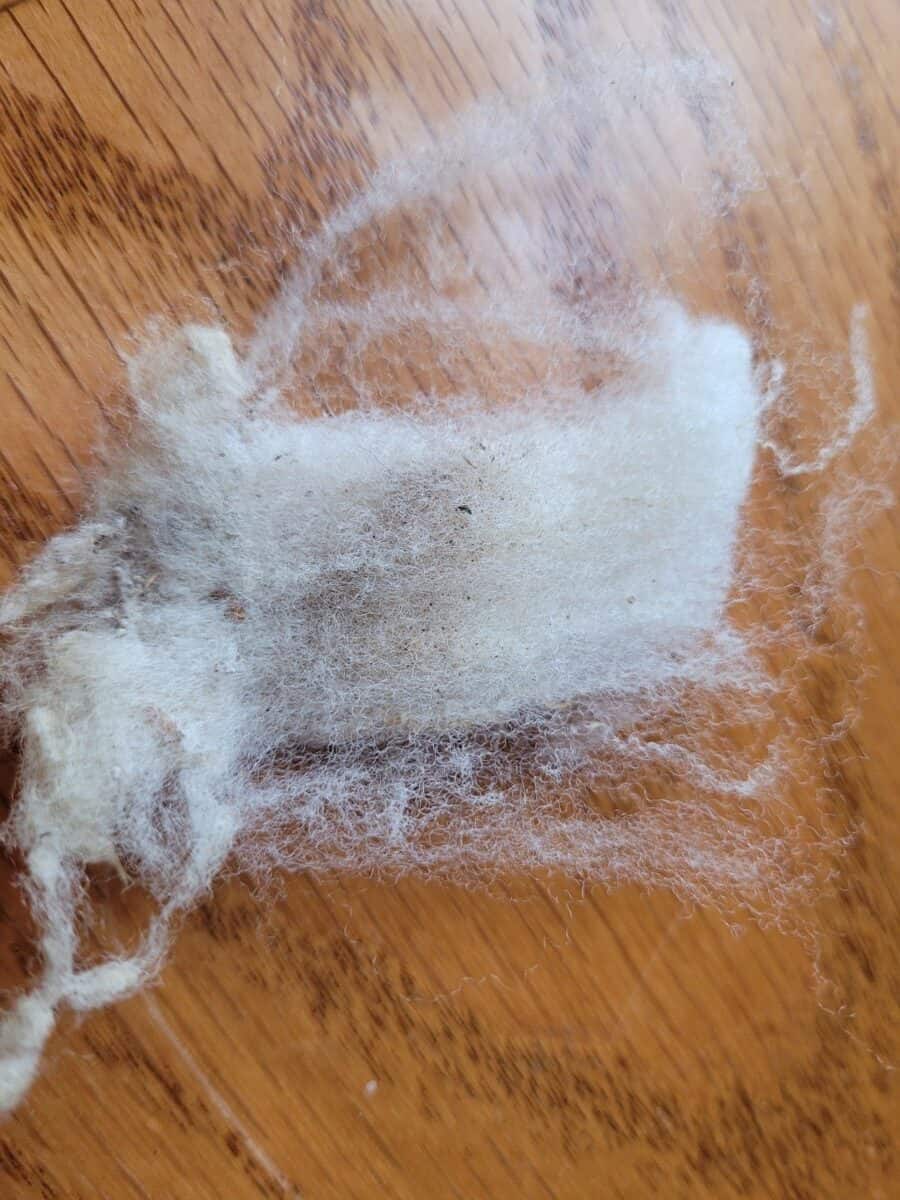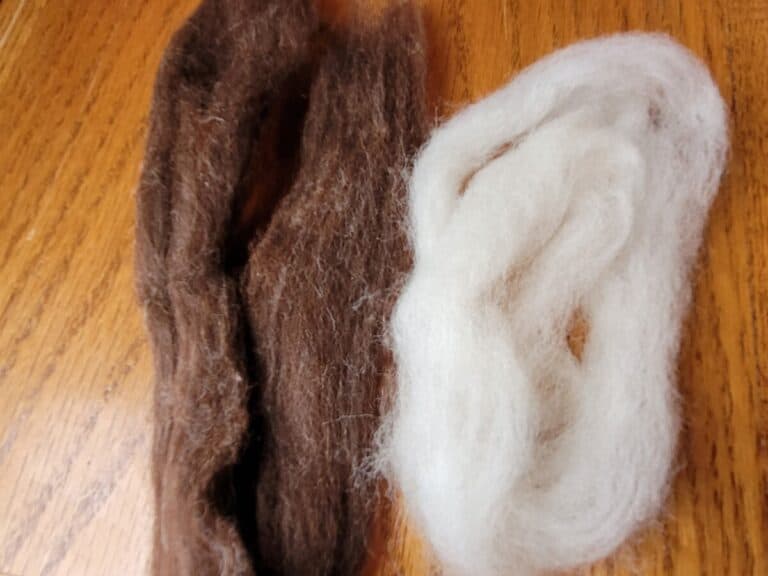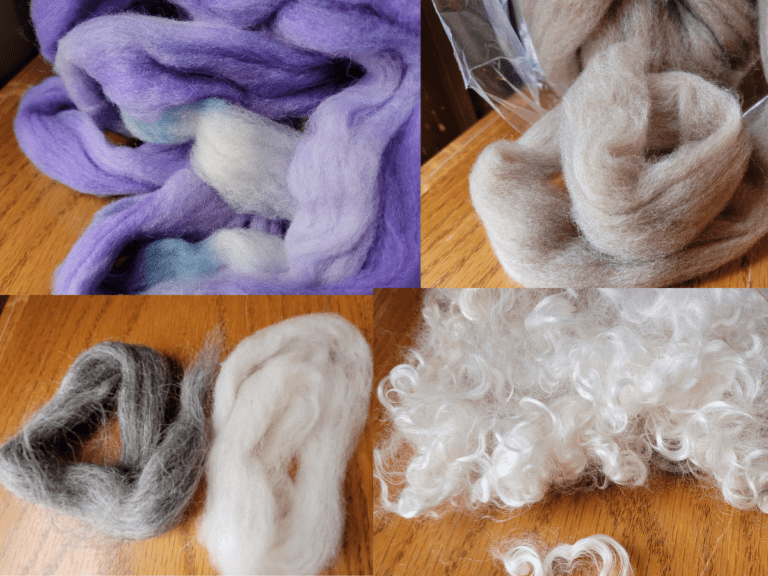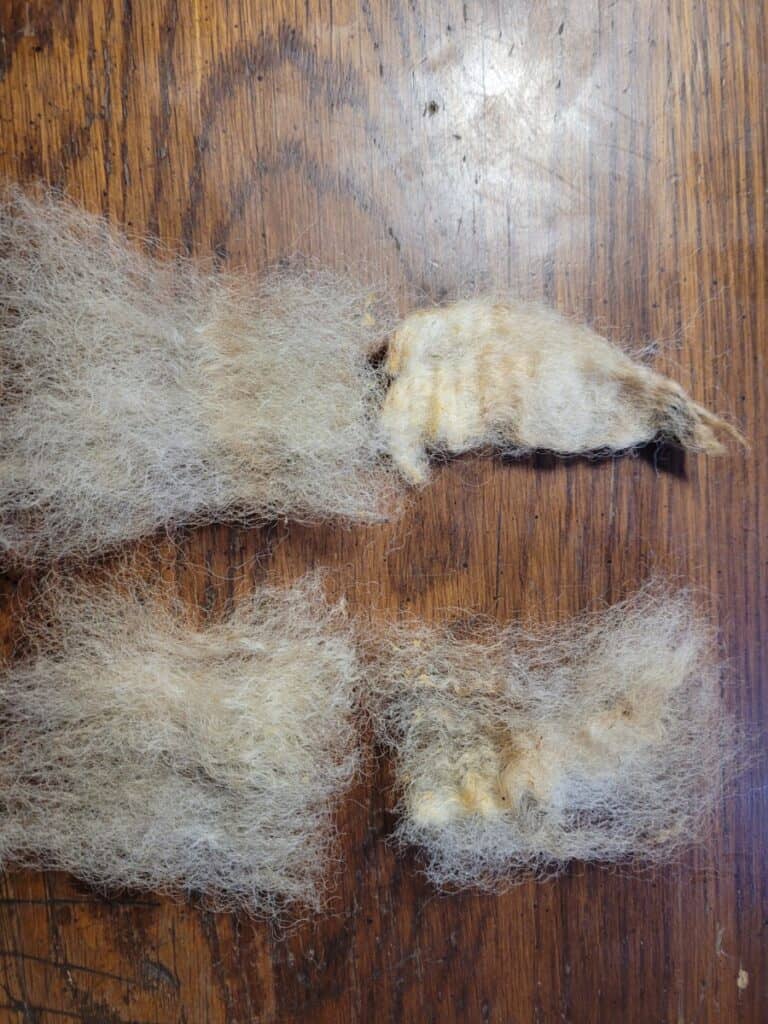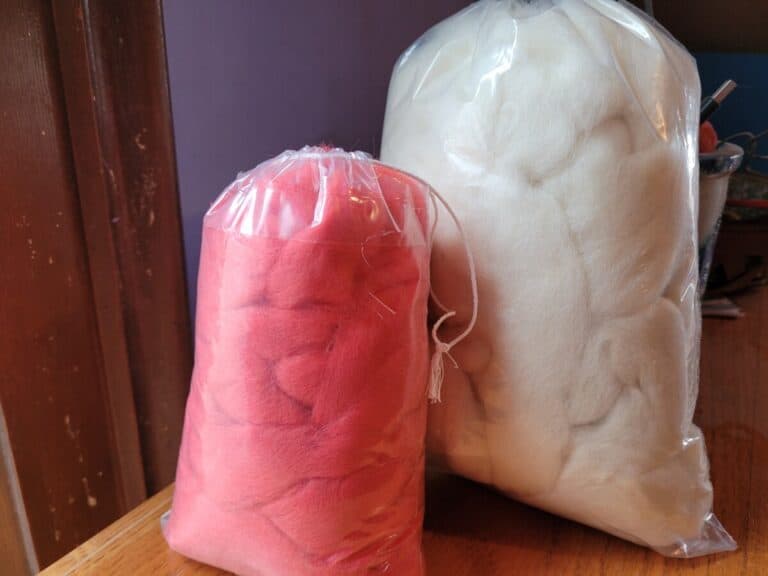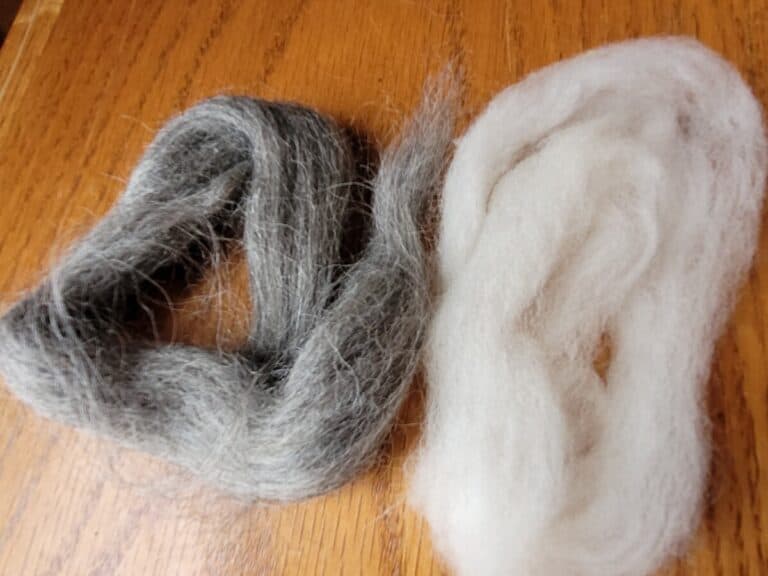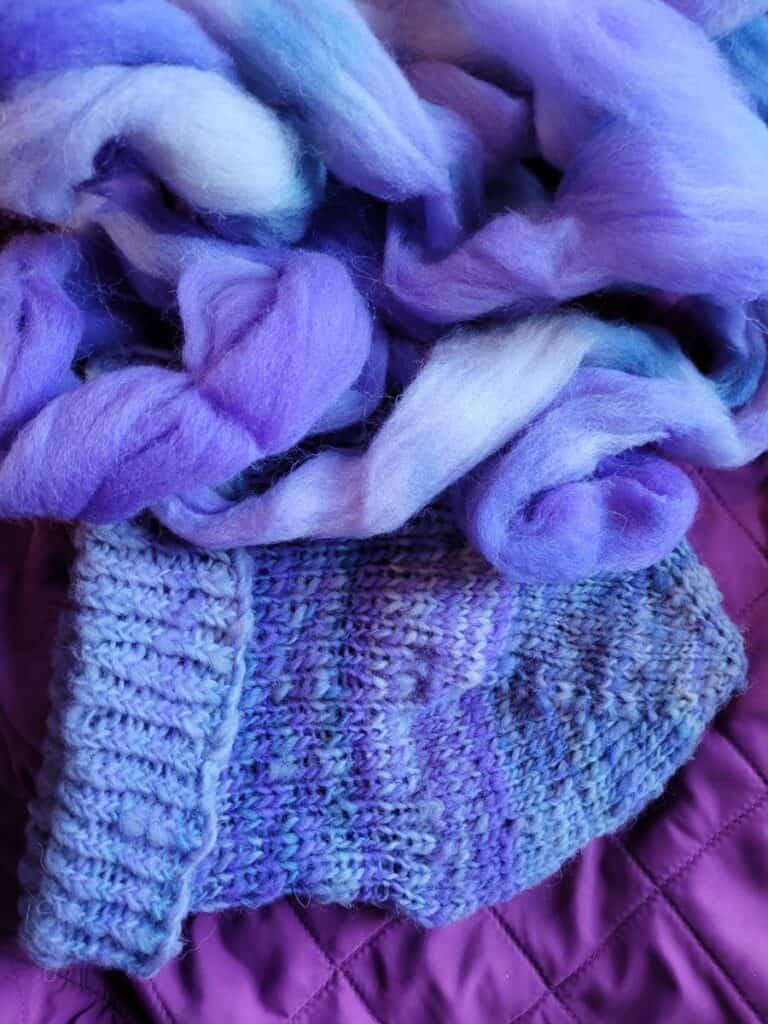Can You Spin Wool Without Carding It?
Some handspinners really get a kick out of carding wool for spinning, others, like me, would prefer not to card at all! But can we do it, is carding a must or are there times when carding wool is optional?
You can spin uncarded wool if the wool fibers will easily separate out by hand and the wool you are starting with is low in grease and mostly free of contaminants like VM (vegetable matter).
Can you spin wool without carding it? Sure. Should you? That’s a more involved answer!
How To Get A Fleece Ready To Spin In The Grease gives you more details on working with your raw fleece before you spin.
You can spin wool without carding it
You can spin wool without carding it, if you are able to separate out the individual wool fibers enough to draft them out into the size of yarn you are planning to spin.
The purpose of carding wool is to separate out the fibers of wool, remove tangles and, hopefully, drop out most of the dirt or other contaminants like VM (vegetable matter).
If you are happy with the ability of the fleece to be teased out by hand and are willing to work with the amount of dirt or VM that is in the wool, you do not have to card it before spinning.
How Match A Fleece And Your Handspinning Project will give you tip on selecting a fleece that will work well for you.
For example, spinning a worsted spun and worsted weight single yarn for something like a sweater or blanket is definitely doable with uncarded wool.
Uncarded wool will have the fiber alignment you need to spin worsted and will not need the extreme individual fiber separation that would be required to spin a smaller diameter yarn.
Wools that will be good candidates for spinning without carding are:
- wools that tease out easily with your fingers
- wools that are low in grease
- wools that have a mid range (3-5 inch) staple length
- wools that are clean
- wools that have little to no VM
- wool that has been recently shorn (within one year)
A few situations that would not work well for spinning uncarded wool are: if you are trying to spin a very fine yarn or a woolen style yarn, you need to card to get the fiber well separated, which means carding.
Wools that will be more challenging to spin without carding first are:
- wool that you want to spin fine
- wool that you plan to ply
- wool that is dirty
- wool that has contaminants
- wool that is very short stapled
- locks that resist hand teasing apart
- wool that is high in grease
- wool that has been sitting around (shorn more than 1 year ago)
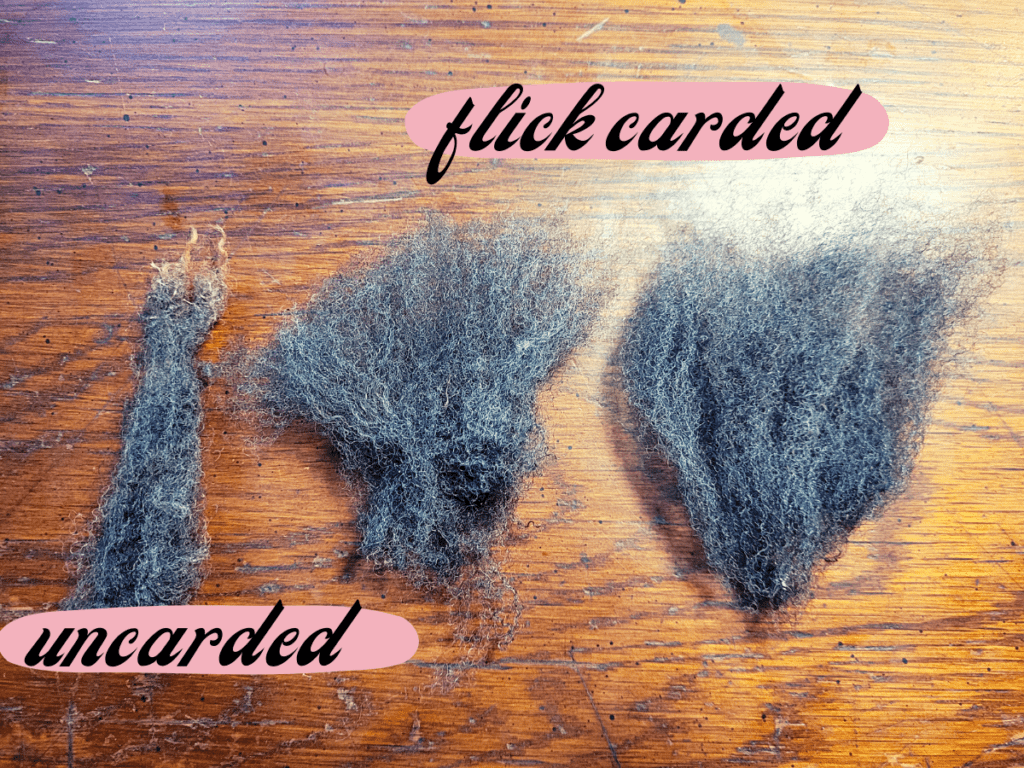
You can flick card wool
If the wool you are working with just needs a little bit more opening up or separation of the locks and it will be in great shape for your spinning project, consider using a flick carder instead of hand cards.
I realize that flick carding is still technically carding the wool before spinning, but since it is less of an involved process, so I’m including it as an option for anyone who wants a touch of carding.
A flick carder is used to open up the ends of the lock of wool but not to card the entire lock.
You hold the wool lock and use the flick carder to lightly rake over the ends of the lock, which will separate out the fibers. Flick carding works well when minimal carding is needed.
I have used the flick carder most recently on a Finn cross fleece I have that has the ends of the lock lightly felted. I suint soaked the fleece then flick carded before spinning. That worked just as well as carding.
If I wanted to spin a finer yarn or was working with a greasy fleece, a flick carder would not do it.
I would need to actually wash the fleece and card it to get the fiber separation I would need to draft a fine yarn, especially since I have a tendency to spin chubbier yarn planned!
Fine yarns require great fiber prep!
How prep raw for spinning without carding
To spin your wool without carding it first, you’ll want to make sure that the wool is as clean as possible.
This means you need to skirt off the edges (if this has not been done for you) and remove any odd bits of VM or whatever that you see. It’ easier to get that stuff out now, before you get started spinning.
Of course, you’ll still need to pick off any contaminants as they come through the fiber when you are spinning, but anything you remove now makes you have less work later.
Now take off a section of the fleece to spin from. Do not use the entire fleece, just work off of one chunk that is around the size of your hand to, at most, the size of your head.
Take the ends of the locks of wool and tease them out a bit and you are good to go! See how spinning the first few feet of yarn goes for you and adjust from there.
If you find spinning raw wool naturally gives you a fatter yarn than you would like, consider flick carding or a suint soak to see if that will make a difference for you.
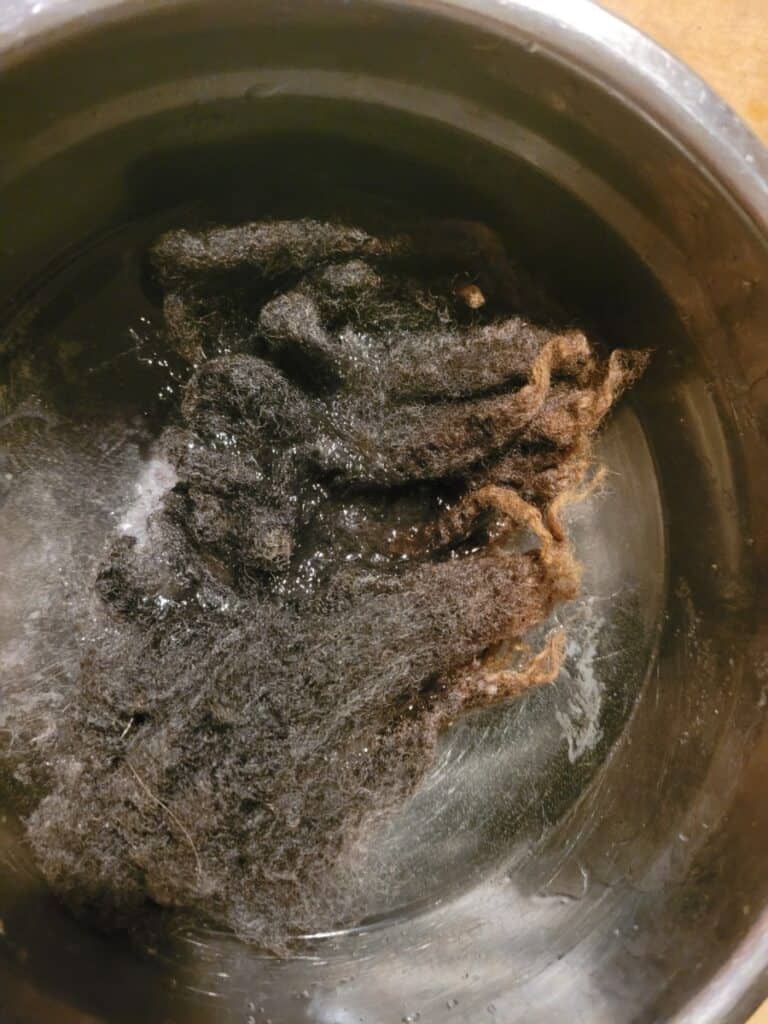
Consider a suint soak to loosen up wool fibers
If you have wool that is not quite working out without carding, consider using a suint soak to loosen up the fibers before you spin.
To make a suint soak, you just put the wool in a mesh laundry bag in a container of lukewarm water. Let the wool sink on it’s own and leave it overnight. The water will be tea colored in the morning.
Take out the mesh bag, drain it and dry the wool. It’s that easy!
Now try spinning the wool and see how it goes for you. If it’s still not easily separated, you can try flick carding or hand carding, if you are willing to get lanolin on your cards, or washing and carding.
To be honest, I thought this soak idea sounded dumb, until I tried it and the soak made a big difference with the fleece I was using.
I couldn’t get the ends of the locks to separate out and I was trying to avoid carding, I’m not a big fan of carding to begin with, so I tried the suint soak then flick carding. Perfect!
I actually liked the yarn that I made with the soaked and flick carded wool better than the yarn I was able to make with the hand carded wool.
Preparing Fleece is a short and easy to understand article and video by Classic Carder if you want another take on spinning in the grease and suint soaking.

